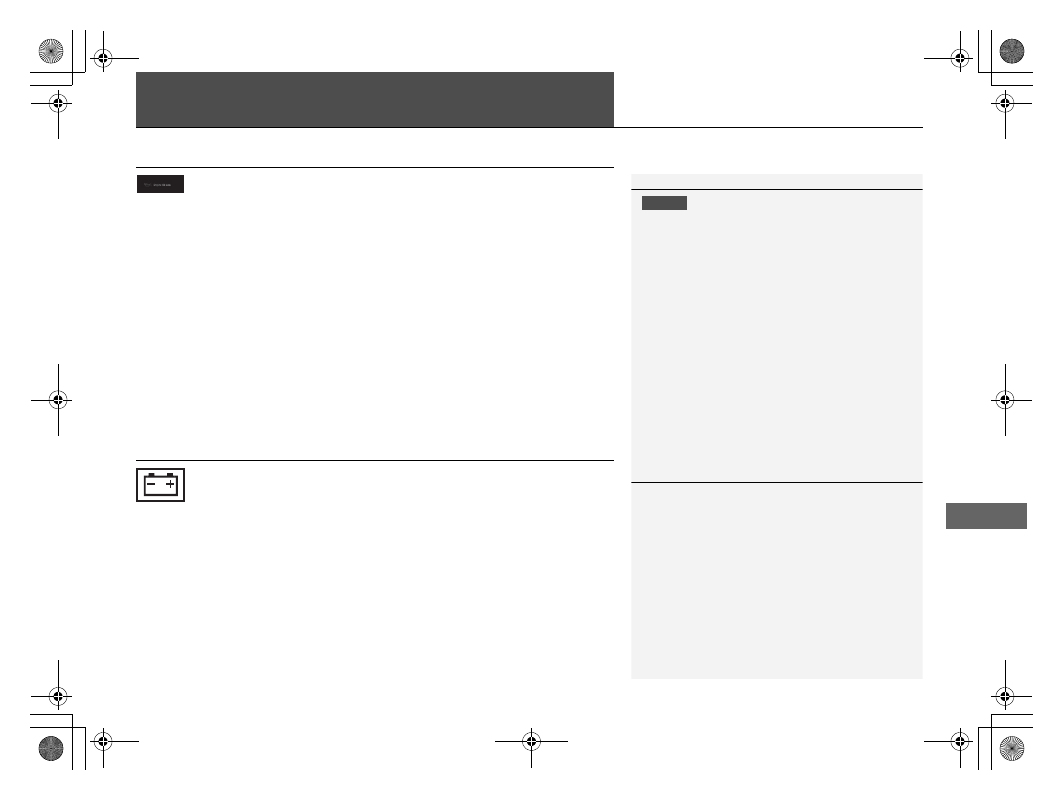Honda Pilot (2019 year). Instruction - part 45

707
Han
d
lin
g the U
n
expected
Indicator, Coming On/Blinking
If the Low Oil Pressure Warning Appears
■
Reasons for the warning to appear
Appears when the engine oil pressure is low.
■
What to do as soon as the warning appears
1. Immediately park the vehicle on level ground in a safe place.
2. If necessary, turn the hazard warning lights on.
■
What to do after parking the vehicle
1. Stop the engine and let it sit for approximately three minutes.
2. Open the hood and check the oil level.
u
Add oil as necessary.
3. Start the engine and check the low oil pressure warning.
u
The warning disappears: Start driving again.
u
The warning does not disappear within 10 seconds: Immediately
stop the engine and contact a dealer for repairs.
If the Charging System Indicator Comes On
■
Reasons for the indicator to come on
Comes on when the battery is not being charged.
■
What to do when the indicator comes on
Turn off the heating and cooling system
*
/climate control system
*
, rear
defogger, and other electrical systems, and immediately contact a dealer
for repairs.
1
If the Low Oil Pressure Warning Appears
NOTICE
Running the engine with low oil pressure can cause
serious mechanical damage almost immediately.
1
If the Charging System Indicator Comes On
If you need to stop temporarily, do not turn off the
engine. Restarting the engine may rapidly discharge
the battery.
* Not available on all models